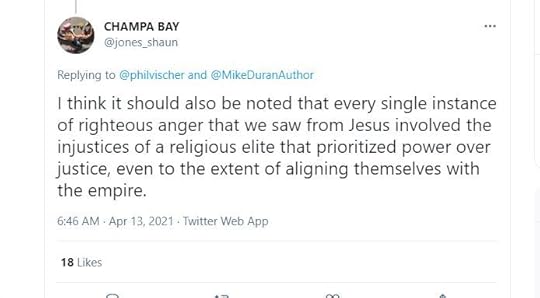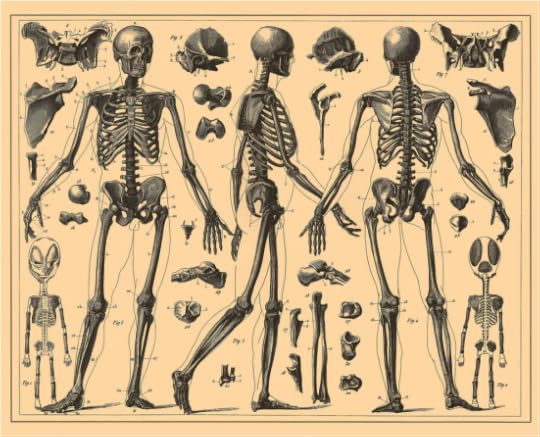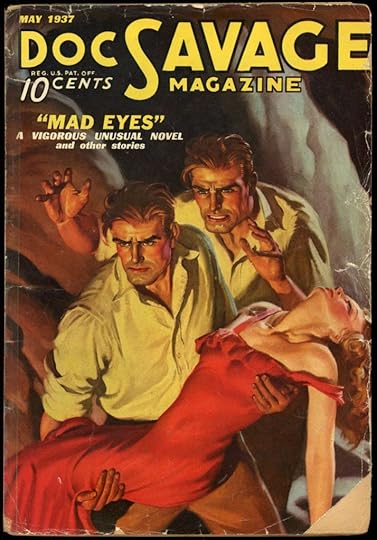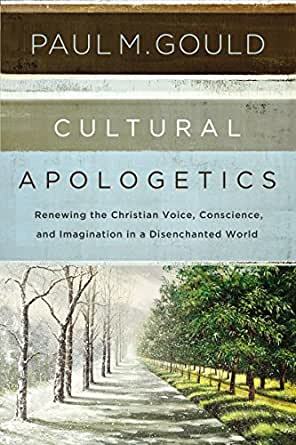Mike Duran's Blog, page 6
April 14, 2021
Did Jesus Just Offend the Religious Elites?

Two local ministers met for coffee. One pastored a small, struggling church while the other pastored a large, thriving church. “Why is your church growing?” the first pastor asked. “Because I preach the Gospel!” the successful pastor answered. “And you?” he asked. “Why is your church not growing?” The first pastor shrugged and said, “Because I preach the Gospel.”
Does the preaching of the Gospel attract people or repel people?
Charles Spurgeon once quipped that “We cannot expect those to approve of us whom we condemn by our testimony of their favorite sins.” Likewise, despite Christ’s mercy and compassion, He made enemies. A.W. Tozer noted that Jesus was either perfectly loved or perfectly hated, but people were rarely indifferent to Him. Jesus was a polarizing figure… which doesn’t happen when you’re Mr. Nice Guy.
The Gospels tell us that immediately after Christ’s baptism He went forth proclaiming, “Repent, for the kingdom of heaven is at hand” (Matt. 4:17). Calling people to “repent” is hardly the way to attract followers. Nor is it conducive to the caricature of Jesus often painted as a gentle, compassionate, tolerant, humble, emotive, rather namby-pamby individual. Rather, Jesus spoke Truth, despite whom it triggered.
Before the Gospel is “good news,” it is “bad news.” The “bad news” about the “good news” is that we are sinners in need of a savior. And if we don’t repent of our sins and turn to the Savior, we will “die in our sins” (Jn. 8:24). At least, this according to Mr. Nice Guy. No matter how kindly and lovingly one presents the “good news,” it will be “bad news” to someone.
But I’m not sure if the Church believes this any more.
I engaged in an online discussion recently about the Church’s treatment of outsiders, namely those in the LGBTQ community. There’s an assumption in such conversations that if the Gospel was REALLY preached to the LGBTQ community, and if Christians were REALLY loving, then more if these individuals would be wooed to Christ and embrace the Gospel. In other words, if we just embraced sinners rather than scolding and finger-wagging, urging them to repent, our churches would be bursting at the seams.
For example, Ray Ortlund, a popular Christian pastor and teacher, recently stated that what “impedes the Gospel’s advance” is the Church’s “tone.” He says,
“…we decide if the Gospel is going to advance. And we decide that not just at the level of what our formal doctrine is, but at what our informal relationships are. And when our nation can see in us the kind of grace, mercy, love, the dropping of judgment — God has lowered His gun in looking at us and embraced us to His heart — when we can demonstrate that kind of mercy toward one another, that joy over one another, that receiving of one another, then the Gospel will explode. “
So if Christians were just nicer, friendlier, more gracious, more forgiving, and less judgmental, the Gospel would advance.
Of course, when it’s pointed at that Jesus, the Original Gospel Preacher, was not always a nice, non-judgmental, tolerant kind of guy, allowances are made. Plan B of the Gospel Tone Police is then to point out, that “Jesus only offended the religious elites.”
I evoked that response in a Twitter dialog just yesterday.

So Jesus only vented and passed judgment on the religious elites. He did not express “righteous anger” to the average person. Tax collectors, prostitutes, fishermen, and widows were all free from Jesus’ stern gaze. To them, He was patient, gentle, empathetic, soft-spoken, and tolerant. But when the Pharisee showed up, He let ‘im have it!
Such an approach offers several advantages to the Gospel Tone Police. For one, it legitimizes condemnation of the “elite.” Why rebuke the “little guy” when Jesus targeted the oppressors, the rule-makers, and the societal upper-crust? This frees us to broadly condemn religious authorities, influencers, systems, and power structures which are deemed “oppressive.” Why? Because Jesus did. He always punched up. For another, this approach falsely frames the Gospel as a “feel-good” missive and strips it of bite. I mean, if we’re watching our tone, telling someone that they are a sinner who needs to repent is a bit forward. If our goal is to preach the Gospel in such a way that it attracts sinners, we may not want to use Jesus are our example.
You see, Jesus was an equal opportunity offender. His terms for discipleship — whether for the Pharisee or the fisherman — were quite high. He often angered and turned people away, whether they were the “religious elite” or the peasant just seeking a free meal. For example:
Jesus went everywhere preaching “Repent and believe” (Matt. 3:2, 4:17; Mk. 1:15)Jesus issued strict terms for discipleship, like denying one’s life, family, possessions, etc. (Lk. 14:26 and many others)Jesus told the adulteress “go and sin no more.” (Jn. 8:11)Jesus told the rich young ruler to sell everything and give it to the poor. The man went away sad. (Matt. 19:16-29)Jesus drove away the multitudes and lost “many disciples” when He commanded them to eat His flesh and drink His blood. (Jn. 6:66)Jesus cautioned the healed invalid to stop sinning lest something worse come upon him. (Jn. 5:14)Jesus drove the moneychangers out of the temple. (Matt. 21:12)Jesus rebuked Peter and even called him “Satan.” (Matt. 16:23)Jesus rebuked His disciples on numerous occasions (for their unbelief Lk. 9:37-41a; their inability to understand His betrayal 9:44-45; their pride 9:46-48)Yes, Jesus’ “yoke was easy and His burden was light.” He is meek and lowly of heart (Matt. 11:29). He is a friend of sinners (Matt. 11:19). He knows us intimately and loves us deeply. We should be incredibly thankful for these things! However, He also came to bring a sword and divide households (Matt. 10:34). He came to call sinners to repentance (Lk. 5:32). And He will return as a fiery-eyed warrior king, riding on a white horse, leading an army of saints against the powers of hell. “With justice he judges and wages war” (Rev. 19:11 NIV).
The Gospel Jesus came to preach is for both the “religious elites” and the “common man.” To them, John wrote, “Whoever believes in the Son has eternal life, but whoever rejects the Son will not see life, for God’s wrath remains on them” (Jn. 3:36 NIV). That term “whoever believes” encompasses both rich and poor, “oppressor” and “oppressed.” Likewise, that phrase, “whomever rejects” equally applies to all. In this way, neither the “religious elite” nor the Man on the Street gets a Gospel pass.
Jesus’ love for people, whether the cold-hearted Pharisee or the world weary everyman, didn’t stop Him from speaking the truth to them… even if it hurt.
Jesus loves you so much that He will risk offending you.
It’s fallacious to assume that if people reject our message, either our presentation is off or our message needs modified. If someone is offended by your Gospel, the tone police scold, you’re not sharing it in a loving manner. However, even when truth is lovingly spoken it can potentially turn people away and hurt their feelings. I mean, the same mob that shouted “Crucify Him!” were likely some of the same who’d flocked to Jesus’ tent meetings. Shall we accuse Christ of being a big meanie because His message left some angry, confused, offended, or upset?
It’s equally fallacious to conclude that Christ only offended the “religious elite.” Would a harsher judgment fall upon those religious leaders who misrepresented God and made one’s path there more difficult? Absolutely! (See the Seven Woes of the Pharisees and Scribes.) Nevertheless, “WHOEVER rejects the Son will not see life, for God’s wrath remains on them.” The road to salvation was indeed narrow, but it was the same road for all. The religious elite or the Average Joe would encounter different obstacles along that road. But the Gospel preached to both was the same.
And no matter how kindly and lovingly one presents that “good news,” it will always be “bad news” to someone.

April 8, 2021
Biblical UFOlogy and Hermeneutical Over-Reach

“The Holy Bible contains some of the oldest UFO sightings on record.” Or so says the Aetherius Society. Perhaps the most famous, they suggest, is the Star of Bethlehem. What evidence is there for such a conclusion? Well, basically, not much.
It is staggering to think that for centuries it was believed that a star had led the three wise men to a stable in Bethlehem. If a star were to come near enough to this planet, assuming that gravity allowed it to do so in the first place, and then pinpointed a country, never mind a city, never mind a young child in a stable in an inn, there would be a dire cosmic catastrophe. All the laws of science prove that stars cannot possibly do that. No, this was a classic example of a UFO leading three advanced men to a great Interplanetary Master who had been born on this Planet to perform a specific mission.
So there’s no actual biblical textual evidence that the Star of Bethlehem was a UFO. The Greek word translated “star” in the text is the word aster, which is the normal word for a star or celestial body. The word is used 24 times in the New Testament, and most of the time it refers to a celestial body. It is quite possible that the word was used to describe some other celestial event, like a supernova or a comet. But an actual aeriform craft is not intimated. Perhaps the closest this story comes to insinuating a UFO is when the Star is described as “going before” the wise men, “till it came and stood over where the young child was” (Matt. 2:9). However, there’s no suggestion that it was a vehicle or an aerial object. It is not described as being in flight, hovering, or whisking away shepherds or mutilating sheep. So why should we conclude that the Star of Bethlehem was a UFO? Why not consider it a miracle, or some other celestial event (like many others recorded in Scripture)?
Such interpretive leaps are par for the course for biblical UFOlogists.
Yes, “biblical UFOlogy” is a thing. Some have described it in terms of exo-theology — a theology of extraterrestrial life. Books and articles claiming to decipher biblical mysteries in light of alien possibilities are now exceedingly popular. (I’m lookin’ at you, History Channel.) Numerous biblical events are cited as “evidence” of ancient aliens. (You can find a long list of alleged UFO sightings in Scripture HERE.) The pillar of cloud that led the Children of Israel through the desert? (Ex. 13:21) It was a UFO. The whirlwind that God spoke to Job out of? (Job 38:1) It was a UFO. Jesus returning “in the clouds of heaven”? (Mt. 24:30). It’s a fleet of UFOs! Even Moses speaking face to face with God can be interpreted via Hynek’s Scale, as the original Close Encounter of the Third Kind.
Sadly, true theological rigor is often lacking in such interpretations.
The eagerness to baptize one’s UFO devotion with biblical events, people, and texts usually results in all sorts of hermeneutical leaps. Like this guy who’s concluded that “Jesus was a genetically-engineered human-alien hybrid sent to Earth to teach the primitive Humans a lesson of love and tolerance.” After all, He said that He was “not of this world” (Jn. 17:16), right? Then there’s the notion that the Ark of the Covenant was designed by space aliens to be a large capacitor which produced manna in the wilderness. What biblical evidence is there for such a conclusion? Well, Exodus 25 – 26 describe the Ark as an ancient “nuclear reactor,” that required “protective clothing” for those who serviced it (the priestly garments), and regular maintenance (once a year the Ark required “cleaning” and “lubrication,” which occurred on the Day of atonement).
So according to the hermeneutics of biblical UFOlogy, the Day of Atonement was a time for the chosen “technicians” (Moses and Aaron) to clean and lubricate the Ark / Manna Maker / nuclear reactor and keep it operating up to spec.
The eagerness to baptize one’s UFO devotion with biblical texts usually results in all sorts of bad hermeneutics.
Recently, I stumbled upon one UFOlogist’s view of Easter. These excerpts from Barry H. Downing’s “The Bible and Flying Saucers” are a good example of the great leaps one must make to support a hermeneutic of biblical UFOlogy. Downing is a Presbyterian minister and ancient astronaut proponent. He writes,

“All four Gospels suggest that there were unusual persons – beings from another world – present at the empty tomb on Easter morning to explain to the individuals who came to the tomb what had happened. We have seen that at the Transfiguration Jesus was making plans concerning the Crucifixion – Resurrection event with persons from another world (Moses and Elijah) who seemed to have arrived by means of a ‘bright cloud’ type UFO.
“There was an ‘earthquake’ associated with the arrival of the angels at the tomb, which could indicate the presence of a UFO which might by its anti-G beam cause a disturbance similar to the one reported at Mount Sinai and the one reported by Elijah outside the cave in which he was hiding.
“What distinguished the angel at the empty tomb was his ‘brightness,’ a property exhibited by the body of Jesus at the Transfiguration. The angel was different from ordinary men not because he had wings, but because ‘his raiment’ was ‘white as snow.’ He wore unusual clothing, perhaps much as our astronauts seem always to wear white clothing to reflect certain types of radiation.”
As someone who is interested in both the Bible and UFOlogy, these kinds of interpretative contortions are revealing. Such conclusions not only suggest a poor reading of Scripture but the super-imposition of a worldview atop it. So rather than taking the Bible at face value, the biblical UFOlogist often deciphers Scriptural phenomenon and events through the lens of a forced exo-theology. Instead of simply interpreting the “bright cloud” that Moses and Elijah appeared in as, well, a bright cloud, the author frames it as a UFO. The “earthquake” that rocked the tomb at Jesus Resurrection can’t just be an earthquake. Instead, it’s a spacecraft’s “anti-G beam.” And the clothing that the angel wore isn’t just radiant, it’s designed to “reflect certain types of radiation.”
Sadly, these kinds of logical stretches are characteristic of much biblical UFOlogy.
Rather than taking the Bible at face value, the biblical UFOlogist often deciphers Scriptural phenomenon and events through the lens of a forced exo-theology.
In 30 Bible Verses about Aliens, the authors reveal a similar proof-texting over-reach. For example, the two following verses are used as evidence that the Bible mentions extraterrestrials.
For our struggle is not against flesh and blood, but against the rulers, against the authorities, against the powers of this dark world and against the spiritual forces of evil in the heavenly realms. (Eph. 6:12)
and
For in him all things were created: things in heaven and on earth, visible and invisible, whether thrones or powers or rulers or authorities; all things have been created through him and for him. (Col. 1:9)
The New Testament asserts that our observed reality is merely a subset of a larger one… a vast world of “visible and invisible” “powers,” all wrestling with mankind and God for spiritual dominance. Might some of these “rulers” and “authorities” be space aliens, extra-terrestrials, or some form of non-human intelligence? Absolutely However, in the context, the apostle Paul is more directly speaking of “spiritual forces of evil” (Eph. 6:12) — demonic entities who are not “flesh and blood.”

In this sense, conflating demons and evil spiritual entities with evidence for space aliens is a tricky proposition. For one, many proponents of biblical UFOlogy tend to view aliens as “allies.” The friendly, peaceful, advanced alien archetype is ubiquitous. However, if we are going to use the aforementioned verses as “proof-texts” that the Bible reveals benevolent alien intelligences, we must admit that such verses are also warnings against spiritual interlopers. In this sense, Ephesians 6:12 is as much a caution against uncritically receiving spiritual, non-human intelligences as it is an affirmation of a cosmos teeming with them.
And that’s the second point I’d like to make here: Framing the cosmos as a multi-dimensional structure is biblical. In other words, our reality consists of both the “visible and invisible” (Col. 1:9). The reason why this is so important is the shift in UFO research. Whereas UFO researchers once interpreted anomalous events simply in terms of physical phenomenon, many are now acknowledging spiritual, mystic, psychic, and metaphysical components. The distinction between ETH and IDH is indicative of this. Whereas UFO researchers used to adhere to ETH — Extra-Terrestrial Hypotheses — they now appeal to IDH — Inter-Dimensional Hypotheses. Jacques Vallee, one of the earlier researchers into the UFO phenomenon concluded, “I believe that the UFO phenomenon represents evidence for other dimensions beyond spacetime; the UFOs may not come from ordinary space, but from a multiverse which is all around us” (Dimensions: A Casebook of Alien Contact). Whatever Vallee’s spiritual outlook on life is, the inference that alien contact may be an interface with beings from another, non-physical dimension is biblically tenable.
UFOs and associated contact with “other” intelligences should indeed be of interest to Christians. Nevertheless, we must not be so enamored of “biblical UFOlogy” that we become guilty of hermeneutical over-reach. Yes, the Bible frames a cosmos teeming with life — both “visible and invisible.” But some of that life is hostile to God’s purposes and Man’s well-being; it is deceptive and crafty and seeking empowerment through human ignorance or acquiescence. A hermeneutic that interprets all contact with inter-dimensional intelligences as beneficent is as bad as one that dismisses all such phenomenon as fake.
Synthesizing UFOlogy and Scripture is tenuous, at best. Does the Bible contain possible evidence of strange aerial phenomenon? Absolutely. Does Scripture describe unusual beings, fantastical events, and celestial wonders. Of course. But interpreting all such phenomenon through an exo-theological lens usually results in bad Bible interpretation. For once one commits to a worldview populated by ancient astronauts, flying saucers, or enlightened ETs, the temptation is to force that perspective into our Bible reading… no matter how awkward it is.
Bottom line: Seeing a UFO in every “burning bush” is just bad theology.

January 25, 2021
“Militant Secularism Could Force Christians to Create New Subcultures”

An excerpt from my latest article, appearing at Lorehaven:
***
We often use the term “Christian ghetto” in a way intended to sound derogative. This phrase refers to an artistic subculture riddled with kitsch, propaganda, and second-rate content. Labels like “Christian fiction,” “Christian music,” and “Christian films” describe the lowlands of this ideological backwater.
However, the “Christian ghetto” term fails to reflect Christian consumers’ well-meaning approach to seek content that reflects their values and beliefs.
Yes, the Christian subculture may not always be technically on par with mainstream pop culture. But its makers share a legitimate, if not noble pursuit to provide its audience with alternative fare.
Nevertheless, we may have valid theological concerns at the root of our criticisms against such Christian subcultures. Jesus calls believers to be the salt of earth, to shine a light in the darkness. So how can we influence the world by withdrawing from it? In fact, the moral rot in many creative institutions could be due, in part, to Christians giving up on them.
This is why I’ve long applauded Christian artists engaging mainstream culture. It’s why I write my Reagan Moon paranormal thriller novels for the general market and no longer publish content labeled “Christian fiction.” It’s also why I’ve taught workshops for Christian authors about writing for the general market. It’s why I’ve blogged about “The Christian Crossover Novelist,” and it’s why I’ve asked, “Is Writing in the General Market LESS of a Ministry Than Writing for Christians?”
But as much as I’m an advocate for Christian influencers in secular circles, I’ve lately found myself wondering if it isn’t in fact time for a new Christian subculture. Or, to put it another way, a tactical withdrawal.
So what caused me to change my mind? Let me explain.
You can read the entire article HERE.

December 31, 2020
The Muddled Metaphysics of Pixar’s “Soul”

The afterlife — and even the “before life!” — play a crucial role in Pixar’s latest release, “Soul.” But unlike the traditional Heaven & Hell paradigm of Judeo-Christian / Western tradition, “Soul’s” hereafter is a gauzy mish-mash of religious concepts and abstractions.
The film is marketed as a kid’s movie, but the topics it broaches are rather “adult.” The story revolves around Joe, a middle school music teacher who dreams of becoming a jazz pianist. He gets his big break when he’s invited to join a popular quartet led by saxophonist Dorothea Williams. But just before his first performance, tragedy strikes leaving Joe’s body in a coma. His spirit, however, awakes in Pixar limbo. Or some conceptual equivalent.
Actually, Joe finds himself first in the “Great Beyond,” and then (because of an accounting error) in the “Great Before,” where souls are being prepared for Earth. There, he encounters archetypal guides, beings comprised of universal quantum fields, and ethereal, milky “souls,” both coming and going. It’s made clear, early on, that this is not “hell.” The closest counterpart would be the “lost souls” who wander in the Astral Plane. The Astral Plane is adjacent to the “You Seminar,” which exists in the Great Before. The “You Seminar” assists unborn souls in developing different traits, quirks and personalities. There, these pre-born souls can participate in various programs where they unlock certain badges and learn about themselves, even taking on mentors like Mother Theresa, Gandhi, or Carl Jung.
Still following?

Anyway, Joe is unwilling to enter the Great Beyond. (What exactly awaits there, isn’t revealed.) Having left earth at the brink of his “big break,” he refuses to “move on.” Joe is eventually assigned to mentor a troubled soul called 22 who’s resisted birth for centuries. Their relationship forms the basis for valuable insights into life. At least, as they travel between Earth and… the Other Place.
So what are Christian viewers, parents, and creatives to think of the Afterlife as framed in Pixar’s “Soul”?
Let me make clear, from the outset, that this is not intended as a review of the movie. I’m simply interested in the spiritual elements and religious themes portrayed in the film. (But, for the record, I mostly enjoyed the movie. Yeah, the thematic pay-off is disappointing. However, the animation is fantastic, the music is also good, and there’s some funny, witty parts.)
When judging stories, I think it’s important to distinguish a fictional framework from hard theology. You can’t expect a movie to articulate doctrine. It’s necessary to step back and look at the bigger picture of what the film is trying to say, without sifting every character or element through a fine-toothed theological comb.
Interestingly enough, Pete Docter, the film’s director, has called himself a Christian. In this interview with Radix magazine, one of the reasons Docter hedges on ever making a “Christian movie” is messaging.
Radix: Do you ever see yourself making a more explicitly Christian movie?
Docter: Not at this point. I don’t know that that’s really me. I don’t feel so comfortable with that. Even if you have a moral to a story, if you actually come out and say it, it loses its power. Not that we’re trying to be sneaky or anything, but you have more ability to affect people if you’re not quite so blatant about it. Does that make sense?
Radix: That seems right in line with what Jesus’ parables were too. He tended not to come right out and explain, “This is what I was trying to say.”
Docter: To me art is about expressing something that can’t be said in literal terms. You can say it in words, but it’s always just beyond the reach of actual words, and you’re doing whatever you can to communicate a sense of something that is beyond you.
Knowing this, it’s important to give Docter and his creative team the benefit of the doubt. Is there a “moral” or message that Soul’s picture of the afterlife is intended to convey? Well, as a fictional springboard, Soul’s afterlife could simply be a mechanism to transition characters between temporal existence and metaphysical realities. However, it’s there that the problems arise.
How the afterlife is portrayed is a “message” in and of itself. Especially in a kid’s movie! So what messages does Soul send to our children about the afterlife?
Clearly, one of the messages of Soul is religious syncretism, a synthesis of all religions and beliefs.
Discussing how the filmmakers “captured the essence of the afterlife,” Wired magazine highlights the broad range of religious concepts and peoples that the filmmakers sought to incorporate.
“In making Soul… Pixar’s animators had to find common ground between dozens of different belief systems to create a one size fits all version of what happens to us after we die, but also before we’re born.
“‘We wanted it to be very non-specific in terms of culture,’ says Pete Docter, who co-directed the film alongside Kemp Powers. ‘If you look at it and go, ‘That’s Greek, or Italian, or Chinese’ that would be wrong because souls, we are saying in the film, come to Earth kind of as a blank slate. Your culture is something that you learn and grow into.” To help, the filmmakers brought in religious experts, personality experts, and even shamans, says producer Dana Murray.”
It’s easy to sympathize with Docter’s desire “to find common ground between dozens of different belief systems.” The problem is, such attempts logically lead to a kind of pluralistic gibberish in which nothing is universally true, all messiahs are legit, and everyone goes to heaven. Or becomes a god. Or merges with the Universe. Or whatever!
As a result, Soul’s afterlife is populated with numerous dissonant religious concepts.
For example, one religion writer notes how Hollywood Loves the Mormon Afterlife.
“…Soul has a full-blown narrative about the premortal path of human beings. The ‘pre-existence’ as conceived in Soul is not identical to what Latter-day Saints believe—there’s no war in heaven, and most fundamentally, no creator God. But it’s close in other details, like the idea that disembodied intelligences have core aspects of their eventual human personality and life spark already attached.
“And most crucially, it’s rooted in the same core belief: that everyone who is walking on this earth does so because he or she made an active choice to come here.”
Christians have traditionally viewed Mormonism as a false religion. The belief in pre-existent souls who choose to be born is just one of many doctrinal differences.
In his review at the Catholic News Service, John Mulderig sees the default religion of Soul as “New Age”:
Although it’s understandable that the filmmakers feel bound to portray the spiritual arena in a nondenominal way in order to avoid offending religious sensibilities, the result feels sterile. In place of angels, for instance, we get cubist-style figures who identify themselves as — more or less — the sum of all the laws of physics.
To the extent that any belief system is represented, the unfortunate choice falls on the New Age movement. Thus, during a sojourn in yet another nonphysical region, the Astral Plane, Joe receives guidance from a middle-aged hippie called Moonwind (voice of Graham Norton) and from the various shamans by whom he’s surrounded.
Another reviewer described the film as “a veritable hodgepodge of ideas that are unbiblical and contradictory.” Elements of reincarnation, Buddhism, animism, and mysticism all make brief appearances. For example, during one scene Joe is told he can reconnect with his physical body through the “crown chakra… the seventh primary chakra in Tibetan Buddhism.”
In Disney/Pixar’s ‘Soul’: A Midlife-Crisis Story Wrapped in Gauzy Metaphysics, Kate O’Hare also notes the syncretistic, New Age components of the film:
The metaphysics of Soul aim for hazy and indistinct but instead wind up leaning in the direction of New Age and Eastern mysticism, including references to the Universe, meditation and chakras. There is no mention of God or any particular Higher Power
She concludes, “Soul tries so hard to be vague and not offend anybody’s belief system (despite borrowing bits of belief systems) that it loses a valuable opportunity to really blow your mind. It’s nice enough and positive enough, but it’s just not enough enough.”
As I said above, I’ll give Docter the benefit of the doubt and assume that he is trying to convey something about the afterlife to stir and evoke hope in his audience. In fact, in the simplest sense, even portraying a possible afterlife is a good thing. In our secular, materialistic age, the belief that souls live on is, at least, a step in the right direction. Sure, themes of “second chances” and “living life to its fullest” are well-worn, if not banal. But considering some of the other elements Docter chose to use along the way, I can’t help but see his spiritual message as muddled.
Jazz music, like all music, adheres to certain norms. F minor is F minor the world over. But while the music of Soul hits all the right notes, its metaphysics are more like white noise.
Mulderig correctly concludes,
“If youngsters are anxious to watch the movie, parents could make it the springboard for a family discussion about life after death and related matters. But they should be aware going in that there’s a lot on screen that needs to be sorted through with discernment and care.”

December 28, 2020
How Should We Remember Ravi Zacharias?

Pulitzer Prize winner, David Garrow, who authored a biography of Martin Luther King in 1986, admitted last year, after looking through newly released archival FBI documents, that King’s infidelities’ and sexual misconduct was much bigger than he once believed.
“I always thought there were 10-12 other women,” Garrow said. “Not 40-45.” In fact, he suggested that the revelations were so significant that it “poses so fundamental a challenge to his historical stature as to require the most complete and extensive historical review possible.”
Despite all this, King’s legacy remains relatively intact. He is still considered a civil rights icon. His accomplishments far outweigh his moral failings, at least, according to most.
I was thinking about this in relation to the recent admissions of predatory behavior and sexual impropriety against the late Christian apologist, Ravi Zacharias. Last week, the board of RZIM, the group he founded, admitted that their preliminary findings revealed the charges to be true.
That admission has been devastating to so many. As one commenter tweeted:
I looked up to him. So many people I learn from looked up to him. He made arguments in defense of our faith against the most knowledgeable critics of our faith that I could never make. He reached three generations with his message.
This sentiment was repeated by many.
Sadly, evangelical culture has suffered a significant share of scandal. But what makes Zacharias’ infidelity so heartbreaking is the scope of his influence and the passion and persuasion he brought to the apologetic stage.
Now I’m left to ask the same question posed by Garrow of MLK: Are these revelations about Ravi Zacharias so significant that they pose a “fundamental challenge to his historical stature”?
This is not to suggest that Zacharias holds a similar historical sway to King. Nevertheless, both had a broad, influential public message and persona, which was marred by private indiscretions.
In his article, How Should We React to the Ravi Zacharias Sex Scandal, one Adventist pastor recommended that we should respond by not promoting Zacharias’ work. Instead, we should
“… reconsider our use of Zacharias’ books, videos, and other materials. As influential as he was, we must consider the implications of continuing to use and promote his work when there are serious questions about his personal integrity. …What kind of witness are we giving when our spiritual leaders turn out to be frauds, yet we continue to applaud them as if nothing is wrong?”
Others are using this as an opportunity to warn the church about a toxic, celebrity culture. David French, for example, appeals to the Church to seek out prophetic voices:
“How many men must be exposed as predators or frauds before you realize your own church culture is broken? How many ministries must collapse before you realize that the problems within the church aren’t due to ‘them’ but rather rest with ‘us’? You can see clearly the problems with institutions like ‘Hollywood’ or ‘Big Tech’ or the ‘elite academy,’ but you won’t apply the same standards to the church—an institution with the highest possible purpose and calling.”
Neither of these approaches, though understandable, grapple with the essential conundrum — How can someone accomplish so much good and yet be so bad? And does their badness nullify their accomplishments?
Yes, this is a good opportunity to interrogate accountability structures and church ministries. Especially parachurch ministries, like RZIM. (Although, I must admit that the claims to “church culture” being “broken” always seem rather nebulous, especially when it comes to fixing the purported brokenness.) And simply not promoting Zacharias’ books fails to acknowledge whether there is lasting value in his approach or reasoning. Unless we conclude that nothing good can ever come from Zacharias’ body of work, what good is the purpose of not recommending his material? He has written extensively on suffering, evil, atheism, pluralism, and the claims of Christ. Does his sin nullify his approach to these subjects?
After Zacharias’ passing, prominent pastor Tim Keller wrote that Zacharias changed the way evangelism is done.
“Zacharias [saw] that Western culture was fast becoming a ‘post-Christendom’ society, where Christianity no longer felt true or even plausible. He saw that people would no longer simply be showing up in church, that the church would have to go out to them. Most importantly, Zacharias recognized that the leading cultural institutions were no longer instilling those basic religious beliefs in people, particularly in the young, and especially among leaders in society.”
As a cultural outsider (an Indian-Canadian) Zacharias was able to engage other outsiders and speak to issues of religious pluralism. In particular, he engaged thought leaders and culture makers. He often went into the most hostile of settings — American universities — and engaged in dialog with seekers and skeptics.
Keller concluded,
“Today it can be very hard to imagine public discourse in which questions are welcomed, disagreement does not threaten and each person is spoken to with quiet but informed confidence, and with the utmost dignity and respect. Ravi Zacharias believed and proclaimed, but more importantly, showed that following Jesus makes this possible.
Even as Zacharias moves on, the Christian church in the West should move toward this vision for our public life together, remembering, as Zacharias put it, that ‘love is the greatest apologetic.'”
Does Zacharias’ sin invalidate his “vision”? Should the Church disengage an apologetic approach because this apologist was a sinful man? Certainly not!
As in the case of MLK, we are forced to admit that bad people can accomplish great things. This is borne out in Scripture. David was “a man after God’s heart,” and also an adulterer and murderer. Samson was anointed with the power of God, and also a womanizer. Their moral failings did not prevent them from being used by God. This isn’t to dismiss or diminish sin, but to acknowledge its imminent proximity.
In grappling with the then-new charges against Martin Luther King, Anne Carlson Kennedy pondered this conundrum, concluding that within the human heart, the line between the good and the bad, the victim and the abuser, is often infinitely fine.
“The roots of badness are intertwined so completely around goodness that we cannot perfectly and satisfactorily disentangle them—not as we know they ought to be—in the clear light of day.”
As a result, Kennedy concludes,
“This is why we oughtn’t to demand great purity from each other. We ought to find ways to forgive and rectify injustice that leans heavily on mercy. Because we cannot be just.
“…Only Jesus can do that. He, by his gentle hand, untangles the mess, by his own blood atones for the horror of sin, by his great love comforts the broken and wounded, and by his perfect goodness judges the sinner. He is good, and we are not—none of us—and yet he has the power to take evil, our evil, and work it out for a great and true and ultimately perfect good.”
Might I suggest that this also applies to Ravi Zacharias. Yes, I’m unsure how to disentangle his sins from his accomplishments.
Souls were saved because of him. And other souls were scarred.
Light and Truth went forth because of him. As did lies and deceit.
Are the revelations about Ravi Zacharias’ sexual sins and indiscretions so significant that they invalidate his body of work and taint his entire legacy? No more than King’s moral failings and sexual indiscretions outweigh his civil rights accomplishments.
“We are all like the moon,” said Twain. “We each have a dark side.” This goes for all of us. Even the best of us. “The roots of badness are intertwined so completely around goodness that we cannot perfectly and satisfactorily disentangle them.” Nor dare we try. That’s God job, “to take evil, our evil, and work it out for a great and true and ultimately perfect good.”
My prayer is that He does that in this situation.
So how should I remember Ravi Zacharias? As a great thinker. As a passionate orator. As a soul saver. As a flawed man who sinned greatly. And as a man who dearly needed the Christ he preached. Pretty much, just like the rest of us.

November 30, 2020
Are Skulls an Anti-Christian Symbol?
 Saint Jerome Writing by Caravaggio
Saint Jerome Writing by CaravaggioI posted some pictures of several ceramic skulls in my office, and a fun conversation ensued on Facebook. Later that evening, I received a short letter from a friend:
“Hey, I’m curious! You create art with skulls and enjoy having them as part of your decor. How do you reconcile that with skulls being the antithesis of all that Jesus is? He is the Way, the Truth, the Life. And the skull is a symbol of Death.”
It’s a great question! And for Christians who enjoy skull art, it’s one worth thinking about. Here’s a few brief responses outlining how I reached the conclusion that the skull symbol is not “the antithesis of all that Jesus is.”
Material things are not inherently evil. This includes the human skull. In Romans chapter 14, the apostle Paul addresses dietary and Sabbath laws and the freedom of individuals to decide the parameters of their own conduct. He concludes, “I am convinced, being fully persuaded in the Lord Jesus, that nothing is unclean in itself. But if anyone regards something as unclean, then for that person it is unclean” (Rom. 14:14). Paul followed a similar line of argument when addressing meat sacrificed to idols in I Corinthians 8. He writes,
So then, about eating food sacrificed to idols: We know that “An idol is nothing at all in the world” and that “There is no God but one.” For even if there are so-called gods, whether in heaven or on earth (as indeed there are many “gods” and many “lords”), yet for us there is but one God, the Father, from whom all things came and for whom we live; and there is but one Lord, Jesus Christ, through whom all things came and through whom we live. (I Cor. 8:4-6)
Here, Paul mocks the idea that an idol — an icon, statue, or false god — possesses any real power. So he reasons that eating meat sacrificed to idols is perfectly fine because “an idol is nothing.” Of course, he goes on to appeal to one’s conscience. But my point here is to illustrate that material things, even things employed for evil (meat sacrificed to idols) are not inherently corrupt.

Objects are not evil, but people’s intentions for using them can be. In Letters to Malcolm, C.S. Lewis wrote, “It is the stealing of the apple that is bad, not the sweetness.” The fruit of the Garden was beautiful and tasty. However, it was the intentions of the eaters that were rotten. Likewise, the nature of of the human skeleton is neutral. Bones have no inherent power in them. You could even say that, by design, bones are a good thing. They frame the body, providing armature for the muscles and organs. The skull may be the most important component of the entire skeleton as it contains the brain. In fact, skulls (and skeletons) are a common accessory found in biology or anatomy class. Are these skulls evil? Do these skulls represent something antithetical to Christ? Of course not! They are purely an anthropological exhibit. Now, if someone were to steal a skull from a laboratory and use it for an occult ritual, would that make it evil? No more than sacrificing a rack of ribs to Aphrodite would spoil the meat. Again, a skull is not inherently evil, but people’s intentions for or depictions of it can be.
And here’s where we need to make a distinction between cultural symbology and moral law. What most Christians object to about skull art is when it is conjoined with evil intentions and dark sentiments. And this is a very legitimate concern! Truth is, for many, the skull is representative of a morbid, grim, and negative outlook on life. Believers should be able to agree that a bleak disposition, or an unhealthy fixation upon death, is not aligned with a Christian worldview. And here, my friend is right. The Christian life should be characterized by joy and hope. A gloomy Christian is a contradiction in terms. These objections, however, do not amount to a moral restriction of all skull art. Because some use the skull as a symbol of evil does not mean all skull art is evil.
Which leads to my final point: Skulls can also be used as a symbol for mortality, a reminder of our own death, and a summons to live life to the fullest. Indeed, some Christian traditions embraced memento mori. Roughly translated, the phrase means “remember death.” It was a religious summons, a meditation. In his article Memento Mori: What It Means and Why It Should Matter to You, Matt McCullough, describes it as “death awareness.” Far from a morbid obsession with darkness, memento mori was a call to live soberly, reflective, and with gusto. Indeed, the Bible often calls us to reflect upon our own mortality and live life with purpose and passion. The psalmist wrote, “So teach us to number our days, that we may apply our hearts unto wisdom” (Ps. 90:12). The Bible describes your life like a “vapor” that appears for a moment and then vanishes away (James 4:14). The apostle Peter said our lives are like grass that springs up before wilting under the sun; all man’s glory is temporary (I Pet. 1:24). In our age of longer life expectancy and medical advances, it’s easy to avoid contemplating death. And pop culture provides plenty of distractions to keep us from those important reflections.
“So teach us to number our days, that we may apply our hearts unto wisdom.”
Ps. 90:12

The memento mori tradition employed many icons and symbols. But most often, it was the skull. Many Catholic saints, like Saint Francis, were portrayed as holding a skull or meditating upon one. Older chapels and monasteries actually gathered the bones of dead saints and displayed them as reminders. A church in Rome, Santa Maria della Concezione dei Cappuccini, is famous for its crypts decorated entirely with the bones of friars. Entering the crypts, one passes a sign which reads, “What you are, we once were. What we are, you will become.”
While some could see this as grotesque, contemplating death, especially one’s own, can be a deeply biblical — even lifegiving! — practice. Indeed, the very road to eternal life leads through death. Jesus was crucified on Golgotha — the Place of the Skull. The irony is that the road to life leads through the Place of the Skull. Jesus conquered death and said that His followers no longer needed to fear it. In this way, the skull can be a signpost, a symbol or reminder that our bodies will whither and be reborn in glory. Or as the apostle Paul put it, “O death, where is your sting?” (I Cor. 15:55).
So in conclusion, Skulls are neutral; they’re just human bones, an important part of our anatomy. Yes, some use skulls for evil purposes and as a depiction of dark, unhealthy obsessions. As Christians, we should avoid creating or displaying skull art that is attached to, or conveys, such spiritual darkness. Nevertheless, displaying skulls is not automatically evil. While some use the skull as a symbol of morbidity and evil, others can use it as a symbol of mortality and a reminder to number our days and apply our hearts to wisdom. When judging skull displays, we should make sure to see past the symbol to the owner’s intent. Is the skull being displayed as a symbol for evil or darkness? Is the skull being displayed as a celebration of life and/or to “remember death”? Or is the skull simply being displayed as a generic cultural icon?

November 16, 2020
Five Reasons Why Christian Publishers Have Lost Male Readers (Pt. 2)
In Pt. 1 of this series I suggested that both the demographics of readers and publishers, as well as the demographics of the evangelical church, have contributed to the disparity of male readers of Christian fiction. Admittedly, that disparity is the result of a confluence of other complex factors. So for those interested in increasing male literacy (both in fiction and non-fiction) as well as seeing more male readers engaged by Christian publishers, there is no easy fix.
Thus far, I’ve offered two possible reasons why Christian publishers have lost male readers. Those reasons were The Gender Gap and the fact that Evangelicals don’t read much fiction. Below I list three more possible reasons for this gender disparity in Christian fiction publishing.
“Clean”fiction” is not a high priority for most male readers
The term “clean fiction” has become a defining characteristic of Christian fiction. Clean fiction is, basically, “family friendly” or “safe” fiction. It’s “safe” because it contains no/very little profanity, no nudity, sex, or sexual innuendo, no/minimal graphic violence or gore, and is mostly uplifting, hopeful, and inspirational.
But is this the kind of content most men require of their stories?

Earlier books for boys and men were often characterized by images of rugged, muscular, adventurous men battling monsters or savages while fighting alongside busty heroines or rescuing swooning damsels. Political correctness has now rendered such stereotypes anathema. (It’s also replaced said stereotypes with a new one, the Strong Female Character.) Nevertheless, the visceral appeal of the early “boy’s genre” tapped into something that drew young men to those books and stories.
That phenomenon illustrated an important fact: Boys will often read what interests them. One of the first things that prompted me to become a reader was my love for monsters — dinosaurs, space aliens, nuclear mutants, etc. It led me to comic books, Weird Tales, Eerie, and a host of other graphic novel-type fare. Some 50 years later I still love monsters… and reading. Of course, temperament and environment played a part in cultivating this discipline. However, it was the subject matter and the visual allure that first drew my interest.
This dynamic was recently evidenced during the Harry Potter craze. In Potter’s magic spell turns boys into bookworms, the author notes how the series about the boy wizard energized male audiences:
Debbie Williams, children’s buyer at Waterstone’s, said: ‘I think that Harry Potter has had a big impact on literacy and particularly in encouraging boys to read more books. Following Harry Potter there has been a real demand from boys aged nine to 14 – traditionally a group that was not interested in reading books. Reading books is now cool and has a playground credibility, and boys want to have read the latest thing.’
The HP phenomenon is likely unrepeatable. Nevertheless, a similar formula seemed to have been at play in the early comic book and pulp magazine era. Those early pulp magazines were gateways to many male readers and writers, engaging them through images and narratives that evoked traditional masculine impulses.
A search for contemporary “Men’s Fiction” reveals lots of Must-Read lists, but few actual best-seller lists. Perhaps the closest is the Amazon category Men’s Adventure Fiction. The genre (predictably) includes espionage, survival, combat, sci-fi, western, noir, and martial arts. Similarly, Ranker aggregates Best Guy Movies, with the top ten containing films like Goodfellas, Saving Private Ryan, Braveheart, Die Hard, The Terminator, and The Good, the Bad, and the Ugly.
It doesn’t take an expert to conclude that men prefer less romantic and emotive fare for the more visceral, gritty, action-packed content. Which creates a potential problem for the Christian fiction market. For if “clean fiction” is one of the defining elements of Christian literature, much “masculine” content won’t make the cut.

This is not to suggest that Christian men want nothing to do with romantic content, are actively seeking “unclean” reading fare, or that profanity, violence, and sex are required for Men’s Fiction. Nor is it to suggest that “clean” fiction cannot be compelling reads. Yet to the male, occasional profanity, blood and gore, or even cleavage is not as off-putting as to traditional Christian fiction readers. The active gravitation away from such content, and branding an entire genre as “family friendly” or clean,” has exacerbated the existing gender gap and driven the Christian male’s interest in stories (whatever still exists!) to other alternatives.
Evangelical churches are losing men
According to Pew Research, about one in five men attends religious services weekly US Congregational Life Survey corroborates, noting that women constitute 61 percent of churchgoing adults. The lack of men reading Christian fiction is evidence of a much larger, and more serious, issue — the evangelical church’s inability to connect with men.
The Church’s difficulty in attracting males may be due less to a deficient outreach model and more reflective of a much larger cultural issue — the feminization of boys and the shaming of traditional masculinity.
Earlier this year, one of the most venerable American institutions, Boy Scouts of America (BSA), filed for bankruptcy. This announcement came amidst declining membership and a wave of sex abuse lawsuits. As Al Mohler notes in his February 19, 2020 podcast of The Briefing, back in 1991, BSA released a position statement that stated, “We believe that homosexual conduct is inconsistent with the requirement in the scout oath that a scout be morally straight and in the scout law that a scout be clean in word and deed and that homosexuals do not provide a desirable role model for Scouts.” But a slow creep began, as BSA progressively softened their stance on homosexual inclusion, in 2013 stating it would “no longer deny membership to youth on the basis of sexual orientation.” Eventually, they accepted gay Scout leaders. And after ongoing pressure from LGBTQ groups to accept transgender boys (that is, girls who declared identity as boys) the group eventually changed its name to Scouting USA. This, compounded by the numerous sex abuse claims, led to the group’s bankruptcy. But as Mohler notes, the heart of this collapse was the moral erosion of BSA’s central mission of “helping boys to grow up into maturity and into manhood.”
The collapse of the Boy Scouts of America is reflective of a much larger moral decline and attack on traditional masculinity.

Christine Hoff Sommers in her book The War Against Boys, outlines this assault on traditional masculinity by suggesting that it has become “fashionable to pathologize the behavior of millions of healthy male children. We have turned against boys and forgotten a simple truth: the energy, competitiveness, and corporal daring of normal males are responsible for much of what is right in the world. No one denies that boys’ aggressive tendencies must be mitigated and channeled toward constructive ends. Boys need (and crave) discipline, respect, and moral guidance. Boys need love and tolerant understanding. But being a boy is not a social disease.”
Some have even went so far as to define masculinity as mascupathy (masculinity-plus-pathology). This “pathologizing of masculinity” has resulted in a demonization of “traditional cultural masculine norms.” The term “toxic masculinity” is now used to describe
…traditional cultural masculine norms that can be harmful to men, women, and society overall; this concept of toxic masculinity is not intended to demonize men or male attributes, but rather to emphasize the harmful effects of conformity to certain traditional masculine ideal behaviors such as dominance, self-reliance, and competition.
While traits like leadership, courage, protectiveness, adventure, self-reliance, competitiveness, and daring can be used for “toxic” ends, they can also be God-given virtues designed to equip and further men. Nevertheless, the shaming of traditional masculinity, the pathologizing of inherently masculine traits, the normalizing of gender fluidity, and the rise of a more aggressive feminism, have led to what some call a “crisis of masculinity.”
The statistics are staggering:
99.999% of American combat deaths and casualties (historically) are men. 76% of homicides are men (DOJ).80% of Suicides are men (CDC).A woman is the party filing for divorce in about 66% of divorce cases. Women receive custody in about 84% of child custody cases. The sentencing disparity between men and women exceeds that between whites and any other minority. 63% of youth suicides are from fatherless homes (US Dept. Of Health/Census) – 5 times the average.90% of all homeless and runaway children are from fatherless homes – 32 times the average.85% of all children who show behavior disorders come from fatherless homes – 20 times the average. (CDC)80% of rapists with anger problems come from fatherless homes –14 times the average. (Justice & Behavior, Vol 14, p. 403-26)71% of all high school dropouts come from fatherless homes – 9 times the average. (National Principals Association Report)75% of all adolescent patients in chemical abuse centers come from fatherless homes – 10 times the average. (Rainbows for All God’s Children)70% of youths in state-operated institutions come from fatherless homes – 9 times the average. (U.S. Dept. of Justice, Sept. 1988)85% of all youths in prison come from fatherless homes – 20 times the average. (Fulton Co. Georgia, Texas Dept. of Correction)
Despite this “crisis of masculinity,” many assert not only that the Church has failed to engage boys and men, but that it has become “feminized.”
In his article The Feminization of the American Pulpit, podcaster Eric Conn chronicles the Church’s historical shift away from men to women as heightened by the advent of the printing press and mass media:
In her book, The Feminization of American Culture, Ann Douglas details how many ministers in the early to mid-1800s took advantage of the advent of mass media that arose because of the advancement of the printing press.
Rejected as effeminate by the masculine world of business, trade, and politics and facing extinction, liberal ministers recognized they could build a platform of influence among literary-minded, middle-class women and urban intellectual elites by writing for leftward newspapers, inhabiting academia, and publishing sentimental books. And write they did.
Aimed at middle and upper class women, their content was, Douglas says, highly sentimental, emotionally driven, and politically liberal. They knew they had to retain at least an homage to Calvinism to get Americans to swallow the pill, so they softened it for the sake of widespread palatability. Call it Calvinism Zero.
Rather than dealing with the masculine world of business, politics, or theology—a world from which they had been banished—their writings focused on social causes: women’s rights, alcohol abuse, slavery, children, etc. Rather than creating a new market with their content, Douglas notes, ministers were instead tailoring their message to already existing female interests and appetites.
Likewise, two fundamental assumptions among liberal clergy (and the women they addressed) were that, first, women are morally pure and more naturally disposed to religion than men; second, that men were worldly for being business-oriented and culture-facing, ruined women and children through alcohol abuse, and must become more like women (receptive, passive) if religion were to benefit them.
One of the most prominent early publishers, the New York-based Harper’s realized the key to success was writing to women even when a book or magazine was supposedly for men. Their theory—and a successful one at that—was that women would buy the books and tell the men what to read.
While this doesn’t sufficiently answer today’s disparity of female to male ratios in church attendance, it does provide another historical context for the evangelical church’s inability to engage men. While, more recently, groups like Promise Keepers were wildly successful at attracting Christian men, the movement was predictably undermined by criticism that such endeavors furthered a type of patriarchal toxicity. This is also a charge often brought against John Eldridge’s popular Wild at Heart: Discovering the Secrets of a Man’s Soul.
So another possible reason that evangelical publishers are losing male readers is simply because evangelical churches are losing male congregants. Not only has the Church and its leaders failed to properly counteract the culture’s attack on masculinity and traditional gender roles, but it has drifted leftward, embracing a kind of soft emotivism and femininity that many men do not find compelling.
Christian publishers market mainly to women
I recently commented on my Facebook page about the disparity of female to male nominations for the 2020 Christy Awards. I wrote:
Wow. Only one man (out of 28 nominations) made the Christy cut this year. And even THAT book was co-written with his daughter. Is it me, or is Christian fiction becoming almost exclusively a female genre?

Of course, this disparity is more evidence of the existing demographic tilt than it is some conspiratorial effort. Indeed, Christian publishers — like ANY publisher — would want to broaden their market as much as possible. Which leads one to ask whether the Christian market is interminably fixed. One need only browse the Christian fiction aisle at their local bookstore to see the proliferation of romance, historical romance, Amish fiction, and mysteries written by and for women. While some cite the historical arc of the mainstream Christian writers’ organization (American Christian Fiction Writers Association, the largest professional organization for Christian writers, began as American Christian Romance Writers before changing its name), others see the disparity as partly organic.
Tim Challies in an article entitled Why Men Aren’t Reading Women Writers, notes “Men write for men and women; women write for women. In other words, a substantial percentage of the books written by women are for women while a substantial percentage of the books written by men are for both men and women. There are exceptions, of course, but in general, women are far more likely than men to write books specifically for their own gender.” He concludes:
“…publishers are asking women to write books for women. They are not asking women to write books for men and women.”
Whether or not Challies’ theory holds water, the marketing element of the male reading equation is in play. Best-selling thriller author Jason Pinter, in his article Why Men Don’t Read: How Publishing is Alienating Half the Population, describes this lack of marketing to men as a self-fulfilling prophecy.
Because if you’ve worked in publishing, you’ve heard the tired old maxim: Men Don’t Read. Try to acquire or sell a book aimed predominantly at men, and odds are you’ll be told Men Don’t Read. This story is not an isolated incident. And while the book I’m discussing is not everybody’s piece of cake, is is a microcosm of what I believe is a huge problem within the industry. If you keep telling yourself something, regardless of its validity, eventually you’ll begin to believe it. So because publishers rarely publish for men and don’t market towards men, somehow that equates to our entire gender having given up on the reading books. Hence the mantra ‘Men Don’t Read.’ THIS MUST END.
In my opinion, this empty excuse of ‘Men Don’t Read’ has begotten a vicious cycle.Men read. Tons of them do. But they are not marketed to, not targeted, and often totally dismissed. Go to a book conference, a signing. Outside of a Tucker Max event, what percentage of attendees are men?
Paul Maxwell, a former acquisitions editor for Zondervan, echoes the above sentiment. In THIS YouTube video, Maxwell revealed some fascinating publishing practices — the majority of books are marketed to women. Even books written for men are marketed to their wives. Maxwell notes:
“There is one piece of folk wisdom among Christian publishing that guides a lot of book acquisition and marketing. Men don’t buy books. Women buy books. That governs most publishing acquisitions and marketing strategy. So even books that we acquired for men were actually marketed to sell to women, mainly, to buy for their husbands or sons.”
In fact, Maxwell goes on to suggest that Christian men are now gravitating to public, more alpha male-type figures like Jordan Peterson, Joe Rogan, and Ben Shappiro, partly because traditional masculinity is being replaced by “beta males” and the American church is somewhat following suit.
Perhaps the lack of marketing to males is simply a reflection of the lack of genres which male readers gravitate towards. Whereas the general market contains all possible genres, from Crime to Sci-Fi to Western to Horror, the Christian fiction market is surprisingly narrow. Thus, publishing genres that might be attractive to males are far more risky in the Christian market.
A good example of this comes from Jon Breen, writing for The Weekly Standard, about my writer friend J. Mark Bertrand. In Divine Deduction, Breen describes Bertrand as “a major crime-fiction talent,” admitting that he’s “one of the best police procedural writers I’ve come upon in years.” Breen proceeds to describe Bertrand’s three-book crime series (beginning with Back on Murder), published by Bethany House, in rather glowing terms:
The police procedure has a feel of authenticity, with extensive detail of weaponry and forensics, and the course of the investigation bears some of the messiness of real life. The narrative energy is relentless. The visual, cinematic style sticks to a single first-person viewpoint, a unity some contemporary thriller writers violate to their detriment. Present-tense narrative annoys some readers (including this one at times), but its sense of urgency and immediacy is effective in the [Roland] March novels.
There’s just one problem…
Bertrand is a major crime-fiction talent—one of the best police procedural writers I’ve come upon in years—but he has not reached nearly the wide audience he deserves for a simple reason: His novels come from a religious publisher. (bold mine)
One would think a religious publisher, just like any publisher, should be about cashing in on their clients’ talents. Then again, perhaps the genre itself and the audience for it, are nowhere to be found in Christian publishing circles.
Because Women’s / Historical / Suspense fiction is the wheelhouse of the Christian market, publishing houses are now designed to crank out this product. With our changing economy, said publishers are forced into “safe mode.” And since men who read gravitate to specific fare and that fare is, mostly, outside the purview of the Christian market, male Christian writers and readers are forced to look elsewhere.
In this way, one possible reason that Christian publishers are not connecting with male readers is because of marketing. A viscous cycle is being fed. Not only have we embraced the myth that “men don’t read,” attempts to engage them are dismissed as having been tried and found lacking. Thus, we create our own self-fulfilling prophecy.
***
Let me conclude by saying that I write this out of appreciation and hope for Christian publishing. I sometimes get charged with being overly-critical of and unfair to the Christian fiction industry. But while I’ll agree to being critical, I do so out of hope and a desire for industry growth. As a Christian, a Christian reader, a church-goer, a father, and a grandfather of five boys, I want to see men engaged more by the Church and by Christian publishers. That would begin, however, by seriously considering possible causes of the existing disparities and the courage to tackle them directly. My hope is that this short series will contribute to that end.

September 8, 2020
“The Third Golem” is Now Live!

The third book in my Reagan Moon series is live. Here’s the blurb for The Third Golem:
He was the Prophesied One, the Twelfth-borne of Chaos… and he drove a ’66 El Camino.
Reagan Moon is a survivor. He’s bested ghosts, lizard people, and death angels. But his greatest foe is waiting in the wings. When an herbalist is ritually murdered in Chinatown, Reagan Moon and the Imperia are drawn into a mysterious plot to reawaken a mythical monster. Seems Balfour Rothbard, chaos magician and technological whiz kid, is seeking to resurrect the legendary Third Golem.
Rooted in Kabbalistic lore, the fabled golem was created as the ultimate super soldier; a kick-ass artificial intelligence fueled by magic. With the help of Ki, the Wayward Guardian, the magician now seeks to awaken the ancient golem and empower it to occupy a place of ultimate power: The Crossroads of Time.
Only a sacred staff, an renowned relic from antiquity, can counter the magician’s madness. But will Moon manage to master the staff in time to thwart the Third Golem, or will his “survivor streak” finally hit the wall?
Myth and magic collide in the third installment of what Publishers Weekly called “one of the best indie novels of 2015.”
The paperback is currently available, while the ebook releases Sept. 9. You can purchase your copy HERE.

April 10, 2020
“Cultural Apologetics” — A Review

The Apostle Paul knew the importance of a proper approach. In the Book of Colossians he wrote,
“Be wise in the way you act toward outsiders; make the most of every opportunity. Let your conversation be always full of grace, seasoned with salt, so that you may know how to answer everyone.” (Col. 4:2 NIV bold mine)
Knowing how to answer everyone assumes that there’s no pat answers. In the case of the Christian faith, a proper approach varies per person. Some spiritual seekers need an “answer” to complex philosophical questions; others don’t. Some need to be engaged emotionally; others intellectually. But to do this requires flexibility, as well as a more nuanced approach to traditional apologetics.
In Cultural Apologetics: Renewing the Christian Voice, Conscience, and Imagination in a Disenchanted World, author Paul Gould suggests that knowing how to respond to spiritual seekers involves more than just answering a checklist of objections. Rather, contemporary apologetics demands understanding the cultural zeitgeist.
Using the biblical account of the Apostle Paul preaching to the Athenians on Mars Hill (Acts 17: 16-33), Gould outlines a more “holistic” approach to apologetics, one that involves identifying “a [cultural] starting point for building a bridge to the gospel” (pg. 27) from which to share rational and historical evidences for the Christian faith. Using that template, Gould diagnoses contemporary culture and its lens to the world.
“How does our culture perceive the world? In a word, we are disenchanted. The view of the world presented to us in the Bible is sacred and beautiful, yet our culture treats it as mundane, ordinary, and familiar. As a culture, we are ‘under a spell’ of materialism. We assume concepts like beauty, goodness, and holiness, but they are disassociated from the wonder of receiving them as a gift from our Creator. Belief in God, faith, and religion are an embarrassment. Yet there is universal longing for transcendence, a nostalgia for an enchanted cosmos, something beyond the ordinary and mundane, that will not leave us. Moden culture is obsessed with ‘contraband transcendence” — a kind of spirituality and occultism that is antitheistic and antihumanistic. Moderns insist that everything is matter. At the same time, through their actions, they reveal a deep longing to connect to something beyond the material world.” (pg. 27 italics in original).
Disenchantment is the result of maintaining a commitment to rationalistic materialism while still experiencing a deep instinctual desire for the transcendent.
Knowing this helps the church better craft her approach to culture.
“The missionary work of the church, then, is conceived as a return to enchantment — a reenchantment of reality through the awakening of desires…” (pg. 45)
So how do we “reawaken the desires” of spiritual seekers?
Using disenchantment as the pervasive sentiment shaping cultural expressions, Gould distills “three universal longings” that can serve as the aforementioned “starting points for building bridges to the gospel.” Those three universal longings are:
TruthGoodnessBeauty
In this way, the goal of the Christian apologist is not simply to make Christianity appear reasonable, but desirable; to address both rational and transcendental longings. By appealing to, by emulating, by sowing Truth, Goodness, and Beauty we seek to re-enchant the dis-enchanted.
“These three universal longings, for truth, for goodness, and beauty, can serve as fitting starting points for a cultural apologetic… These universal human longings cannot be eradicated. Unfortunately, they can be and often are muted and repressed. It’s possible to settle for cheap counterfeits too. This is why God has provided guides within the human soul to help us on our journey. Reason guides us on our quest for truth. The conscience leads us to goodness. And the imagination transports us to beauty” (pg. 29).
Here, Gould introduces us to three “bridges” the evangelist can use to engage the disenchanted — reason, conscience, and imagination.
The intellectually and existentially disenchanted long for Truth, and Reason is the bridge to re-enchantment. The morally disillusioned long for Goodness, and Conscience is the bridge to re-enchantment. The emotionally and sensually disillusioned long for Beauty, and Imagination is the bridge to re-enchantment
Cultural aplogetics is holistic in the sense that it engages culture at multiple junctures. Disenchantment is not the result of one thing. Neither should the call to re-enchantment be. Modern man has been shaped by numerous elements and ideas. Science, Philosophy, Political Theory, Art, Fashion, Film, Music… all these things speak, in one form, to our innate desires for Truth, Goodness, and Beauty. Disenchantment is the confluence of many streams. Because of this, the Church’s missional work to re-enchant the spiritually disillusioned should encompass a broad swath of institutions, mediums, and platforms — the academy, the arts, literature, technology, politics. Such institutions are tributaries to the larger cultural river.
Which brings me to one of the reasons why Gould’s “Cultural Apologetics” so fascinated me. Most apologetic approaches fail to integrate Arts and the Imagination as tools for evangelism. Like Holly Ordway’s “Apologetics and the Christian Imagination,” Gould acknowledges the powerful role that the arts play in engaging and shaping culture. Here, he quotes philosopher Roger Scruton:
“Art, as we have known it, stands on the threshold of the transcendental. It points beyond this world of accidental and disconnected things to another realm, in which human life is endowed with an emotional logic that makes suffering noble and love worthwhile. Nobody who is alert to beauty, therefore, is without the concept of redemption–of a final transcendence of moral disorder into a ‘kingdom of ends.'” (pg. 104).
As someone who is both interested in engaging secular culture and using my art to do so, the balance between the two has been tenuous. While some approach story as an opportunity to “preach to the choir,” others abandon all pretense and simply seek to entertain. So it’s refreshing to see Gould put forth a more holistic approach:
“Many, if not all, good stories are good precisely because they point to the one true story of the world: the gospel. In the gospel, as in the very best fairy stories, we find what we long for: a magical world, life eternal, love unbounded, the defeat of evil, and a happy ending. And all good stories point us to Jesus, even if they do so indirectly. We are drawn to some stories over others because we intuit that they reflect reality, that they are somehow connected to another, ongoing story. Fictional stories prepare us to recognize the true story when we see it. They are windows to another world, beckoning for us to look through for the One who offers us joy unending.” (pg. 113)
Knowing how to answer everyone (Col. 4:2) means acknowledging that everyone is different. While some seekers require rigorous intellectual engagement, others might need a kind word or a timely story. Being a good apologist means learning to discern who needs what. However, one factor that binds all of us together is disenchantment. We desire Truth, Goodness, and Beauty but too often settle for empty substitutes. Not only must Christians be re-enchanted by the wonder of God’s creation and grace, we must make it our mission to challenge our disenchanted age at every front. Paul Gould’s Cultural Apologetics: Renewing the Christian Voice, Conscience, and Imagination in a Disenchanted World is helpful tool to that end.

December 26, 2019
“Christian Horror” Now Available as Audiobook

My non-fiction essay, “Christian Horror: On the Compatibility of a Biblical Worldview and the Horror Genre,” is now available on audiobook. Narrated by veteran voice artist Randy Streu, “Christian Horror” is my attempt to explore the Judeo-Christian roots of contemporary horror, the religious themes that frame much of the horror art, and how evangelical culture has come to distance itself from such a potentially rich and powerful medium. The book is designed to be an apologetic for Christians grappling with the horror genre as well as those who want to understand its cultural and religious implications. You can purchase the audiobook version of “Christian Horror” HERE.




